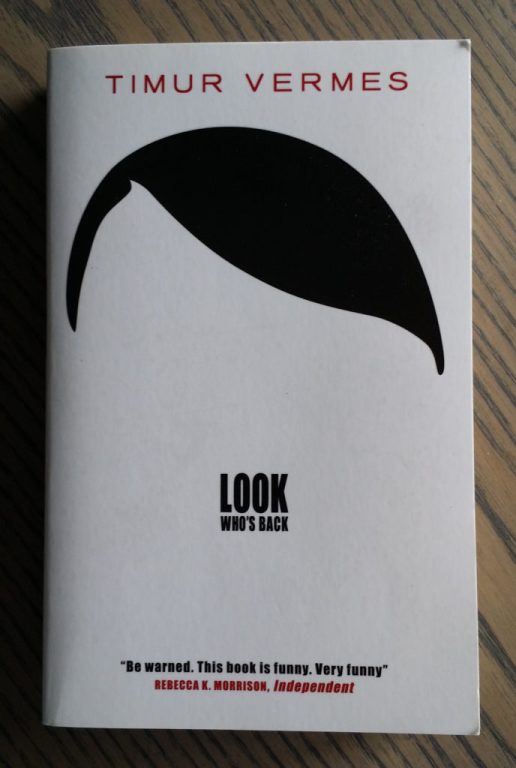One of the things I keep reading/hearing ever since the recent shifts in international power (read up!) is that we’re now living in an alternate reality, or multiple alternate realities. Oh, how I wish that were true. If it were, at the end of the day we’d all just laugh, and go back to a world filled with respect for and adherence to laws and due process and equal human rights for everyone and all the things people living in democracies want or take for granted.
But we’re not living in an alternate reality. This is today’s reality, with actual “arguments” of media bayaran bayas dilawan and alternate facts. As angry as these makes me and most of those I know, frankly it also makes me want to escape even more into reading, where the worlds (and their villains and their ilk) are complex and threatening, but confined to the pages.
Two recent reads gave me enough of the escape I wanted — but also kept it real and made me think long after I got through the last page.

Unlikely heroes
One protagonist is a genocide-loving villain in real life; the other is a talking chicken. Unlikely, indeed.

Let’s start with Timur Vermes’ bestselling fiction book, Look Who’s Back. In this alternate reality, Adolf Hitler comes back to life near his old bunker; it was never explained why or how. He quickly adjusts to life in the ’10s, gaining friends and supporters and a TV show guest role and a show of his own and finally, a political foothold, in due course. The fact that such an abhorrent person is the main character in a fictional story is Look Who’s Back‘s biggest selling point, although apparently it’s not as rare an occurrence as I thought.
It takes a while to get comfortable with having Hitler as a protagonist, but thankfully Vermes gets the story moving quickly enough that I just kept on reading, personal views temporarily put aside. It also helps that Vermes’ characterization is compelling: Hitler is cocky, vengeful, obsessed with regaining and maintaining power, and fancies himself as infallible, but he’s also charismatic, cunning and strategic — all traits associated with despots, by the way. There are also lots of comic moments and funny dialogue, particularly with Hitler’s references to modern contraptions and his general refusal in adapting to technological advances.
In contrast, famed comic book writer and artist Gerry Alanguilan‘s Elmer gets into the struggle for equal rights and respect through a 100% fictional character. This is no laughing matter: Elmer Gallo and his fellow sentient chickens go through long years of death and discrimination at the hands of frightened and prejudiced humans before finally being recognized as human beings. The story is told through Elmer’s diary, posthumously passed down to his son Jake, currently going through issues of his own concerning our two-legged folk.
Elmer’s characterization is mostly done through the aforementioned diary, with Jake acting as the second protagonist. Elmer is instantly recognizable in all his humanity and reason, and so is Jake for all his rage and assumptions. Elmer also isn’t a hero in the traditional sense, but more of a symbol for what people should be. While reading, I forgot that I was relating to poultry, until it was time to make dinner and realized I’m about to cook Elmer’s species in leg-quarter portions. I had a few guilty moments that week, sorry.
Two different reflections
I saw so many real-life aspects in Look Who’s Back that I began to wonder who’s satirizing what. I think Vermes and his translator Jamie Bulloch perfectly captured what made Hitler so convincing as he rose to power back then, although the treatment is light enough that readers don’t get the whole brutal picture. There are plenty of reminders, though. The references and lines concerning racism/”racial purity” and sexism (particularly that part with him talking to his assistant Kromeier when she tries to resign) made me cringe every time, as well as his ability to weasel his way out of problems. You think he’s going down? Think again. He’s still up — and he got another one on you, yet again.
Another hilariously unsettling observation is how the fictional German public clamors for celebrity and spectacle, much like our real global one. The truthful message is being covered up by public image; and we’ll never know we’ve been had until another power-hungry ruler sits at the top, invalidating all the liberties that were fought for by our predecessors, and that we’ve mindlessly enjoyed. Sounds familiar?
The scary thing about this novel is that it’s so easy to agree with Hitler’s observations, and empathize with him as a stranger in a new world. It shows how people with unshakable convictions and self-belief can quickly take over civilized societies and reason. By the time he gets beaten up in the street and hospitalized for extreme injuries, I actually felt sorry for him, something I never imagined would happen when I started reading the novel. That’s great writing right there — and a prime example of how easily one can be swayed given the proper words and circumstances.

If Look Who’s Back is about a man’s renewed quest for power and inequality, Elmer is about a good chicken doing the reverse, against the odds. Through Alanguilan’s beautiful B&W panels, Elmer puts us on the side of those who didn’t have a choice, but must deal with what they got, anyway. It runs along the theme that human beings will allow “equality” only for as long as they still have the upper hand. During the fictional bird flu outbreak, our species’ true colors emerged — chickens were culled again to ward off the disease, and the “us versus them” mentality reigned supreme.
Violent and bloody at turns, Elmer also shows readers how important compassion and forgiveness are. Elmer Gallo and his family wouldn’t have lived without Farmer Ben’s help, Ben had to beat his fear and prejudice to do so, and Jake wouldn’t have become a better person without forgiving those who oppressed him.
Otherwise, hatred can completely consume you and render you useless in the new world — as in the case of Elmer’s brother Joseph. And all the sentient chickens had some serious shit to go through, which makes compassion and forgiveness feats in themselves. The panels showing them waking up upside down, leaving the barn, and then being massacred (and the humans going insane as well — talking chickens, come on! — with at least one suicide by gun) were really intense.
The substory of Elmer and Jake’s relationship was also relatable. The parent and the child never understood each other, nor talked about their issues in detail. Only upon the former’s death did the latter get why specific choices were made, and secrets kept. The conclusions of Jake finishing Elmer’s story and publishing it for the world to read, and with humans and chickens coming together for Francis’ movie premiere, were nice touches.
The end?
Kudos to both Vermes and Alanguilan for tackling a taboo character and a tough (and still current) subject, respectively, and turning them into fictional stories everyone should read. The lessons and the parallels to today’s political and social climate made these books apt reads (too apt?).
I also love how Hitler’s reawakening or the chickens’ sudden awareness weren’t explained. They were just integral parts of the stories, and readers are just expected to roll with them.
I do want to know if the fictional Hitler will regain his status as dictator and genocidal maniac, or if the public will keep him from getting there in their strong impression of him as an ironic and politically incorrect comedian. (Their recognition of him as the real Hitler can pose problems, though. As it should.)
Also: Why do the chickens refer to Ben as “Farmer Ben”? Can’t he be just Ben?
Look Who’s Back, Timur Vermes
English translation by Jamie Bulloch
Paperback, MacLehose Press/Quercus
Buy: National Book Store | Fully Booked | Amazon | Barnes & Noble | Book Depository
Elmer, Gerry Alanguilan
Paperback, Komikero Publishing
Buy: National Book Store | Amazon | Barnes & Noble | Book Depository

